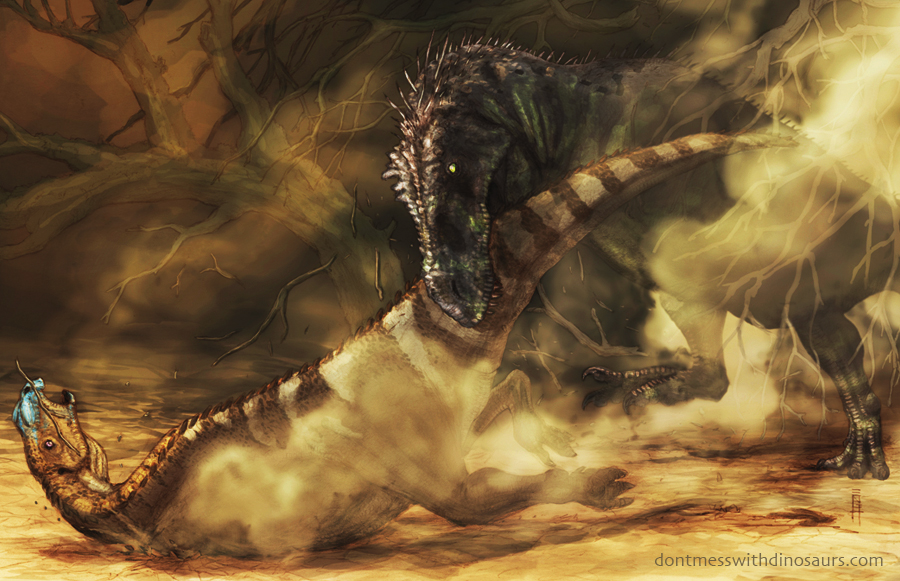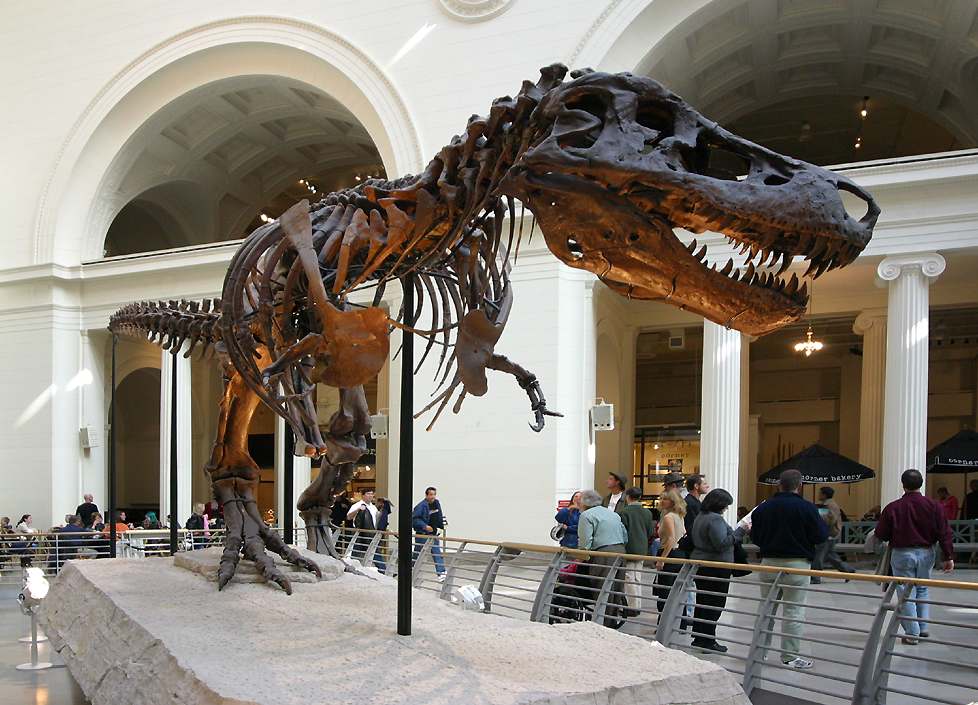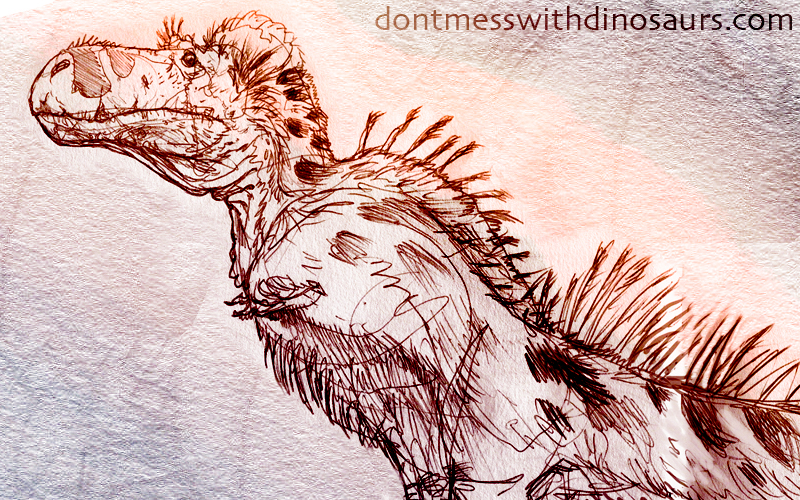What in Hell Creek is a T. Rex?
Seriously. What is this animal?
A few months back I did this illustration of T. rex ambushing a Hadrosaur, inspired by evidence that Tyrannosaurs bit the tails of living Hadrosaurs. I decided to keep the attacking T. rex mostly obfuscated by a cloud of dust partially to give the impression that the Hadrosaur was ambushed as its herd stampeded past a hidden Tyrannosaurus, but also because this mighty predator is a mystery to me.
I was recently at the Field Museum in Chicago looking at Sue again in person, and as I gazed up into that huge bizarre skeleton, I could not ignore an unsettling idea prying at somewhere deep in my childhood psyche: This is not Tyrannosaurus Rex. Those bones were from something different. A creature foreign and bizarre to me from a different world. An animal that looked, moved and fought for survival nothing like what I had grown up imagining as Tyrannosaurus Rex.
For a few years now I’ve been trying to come up with a satisfying reconstruction of a big adult T. Rex but I still haven’t managed one, and in my opinion, none exists from another artist. The necks, legs and tails are all too long, slender and bird-like, the body cavity not deep nor tall enough, the arms too developed looking. I feel like every paleo-artist (including myself) is trying to reconcile the actual skeletal proportions of big Tyrannosaurs with the idea of these animals that the film Jurassic Park made so visually concrete and believable. We want to imagine big Tyrannosaurs as agile hunters chasing down their prey, engaging it in combat, and dispatching it with fatal bites. While some of the smaller species of tyrannosaurs, and the juveniles of T. rex may have been relatively long-legged, the really big ones – the ones we base epic illustrations on – simply weren’t. When I look at the skeletons of the big adult Tyrannosaurs I see a hulking beast with a HUGE body cavity, a massive tail and head, and relatively short thick legs. And yet we have evidence that these massive predators attacked formidable living prey. So what the hell is this animal? How did it live, hunt, and sustain its enormous bulk?
In short, I do not see an agile jungle cat. I see something like an obese crocodile on two thick chicken legs.
I have been kicking around a few ideas for tyrannosaur illustrations (including a reconstruction of Sue) that I want to do in the coming months as I am able to find the time. I know a feathery body covering to the extent that I have drawn in the above doodle is not likely considering scaly skin impressions of tyrannosaurus have been found, but I have been experimenting with different soft tissue reconstructions with the hope of coming up with some new looks for this old giant. Ultimately my aim is to produce some reconstructions that are true to the fossil evidence while at once dramatically depict this seemingly mythical creature as a something more of a real, believable animal.
I think one of the main reasons why dinosaurs (and other extinct monsters) are so awesome is that we can keep imagining new ways they might have been awesome, and ultimately its a pretty safe bet that when these animals were alive they were more awesome than anything we’ve yet come up with. Nature tends to be pretty kick-ass that way.
Ever seen a fossil nautilus?



